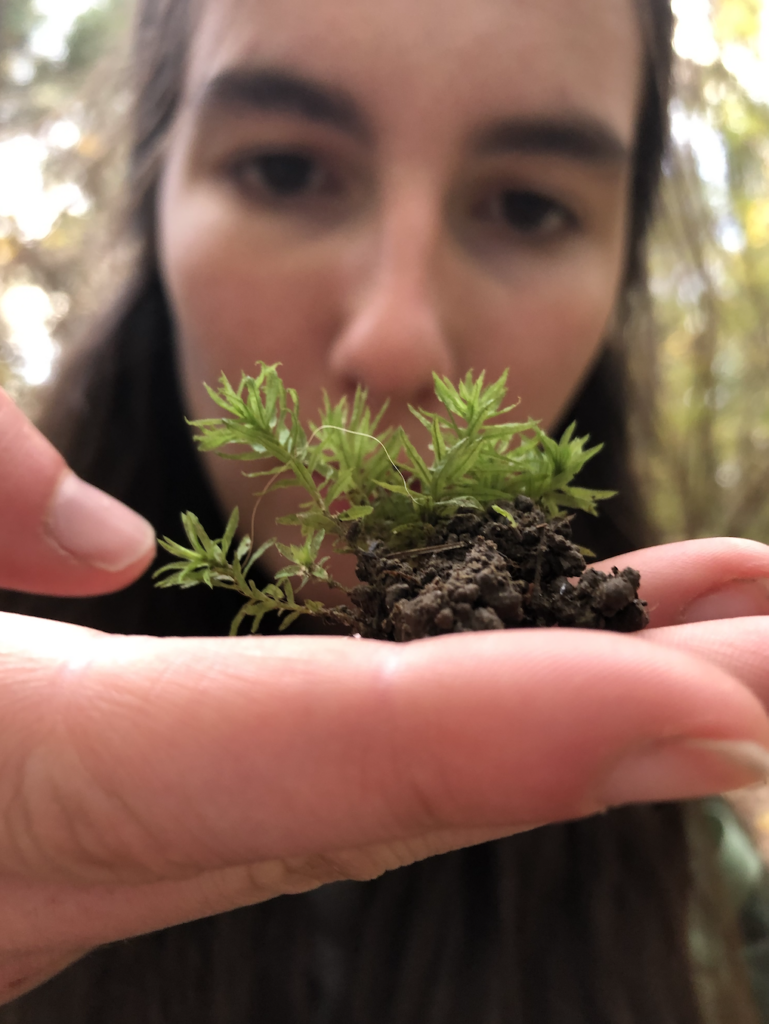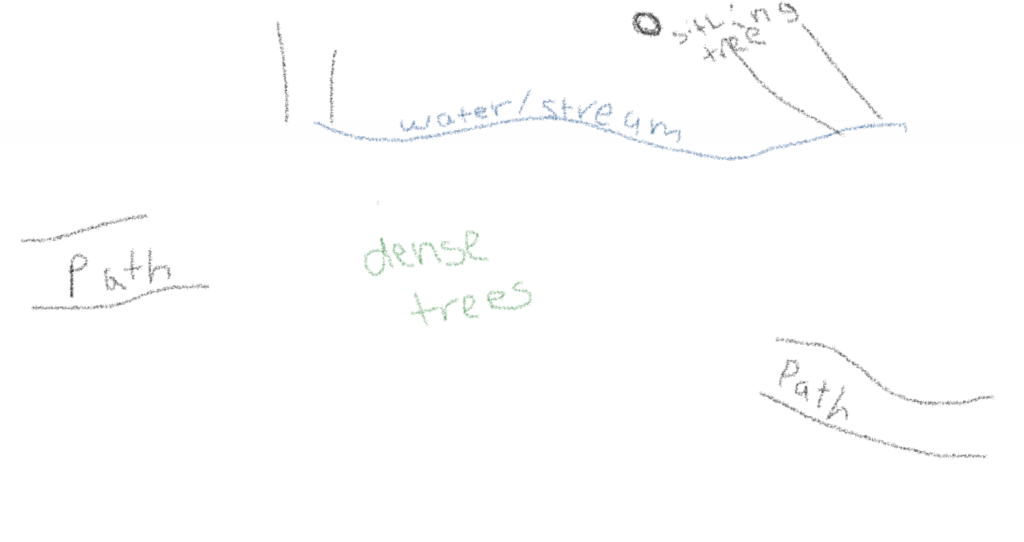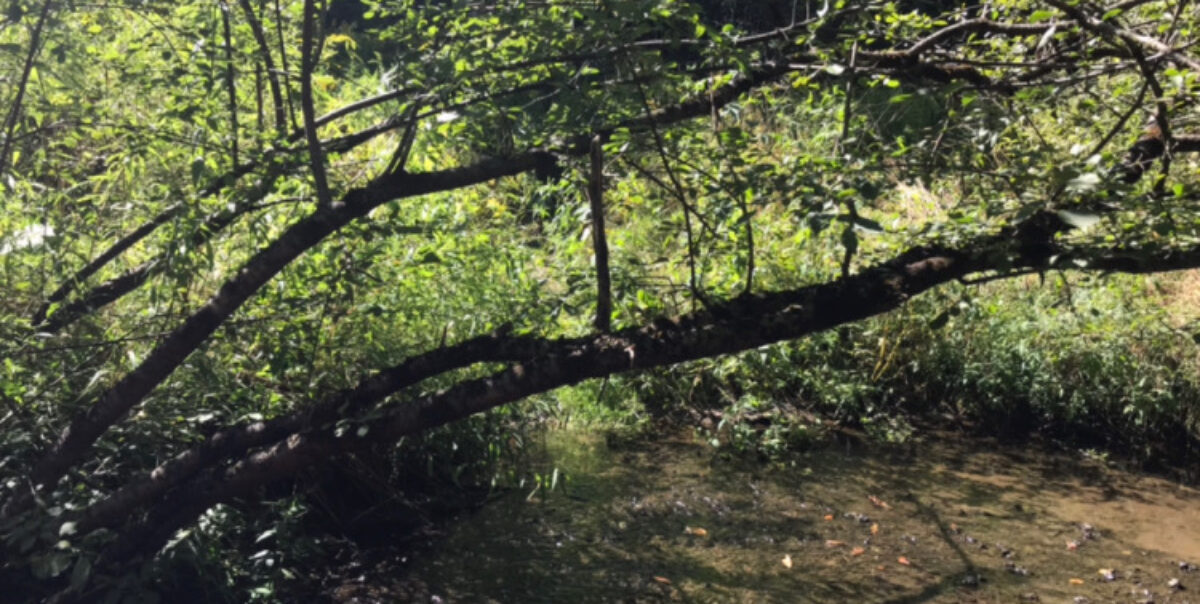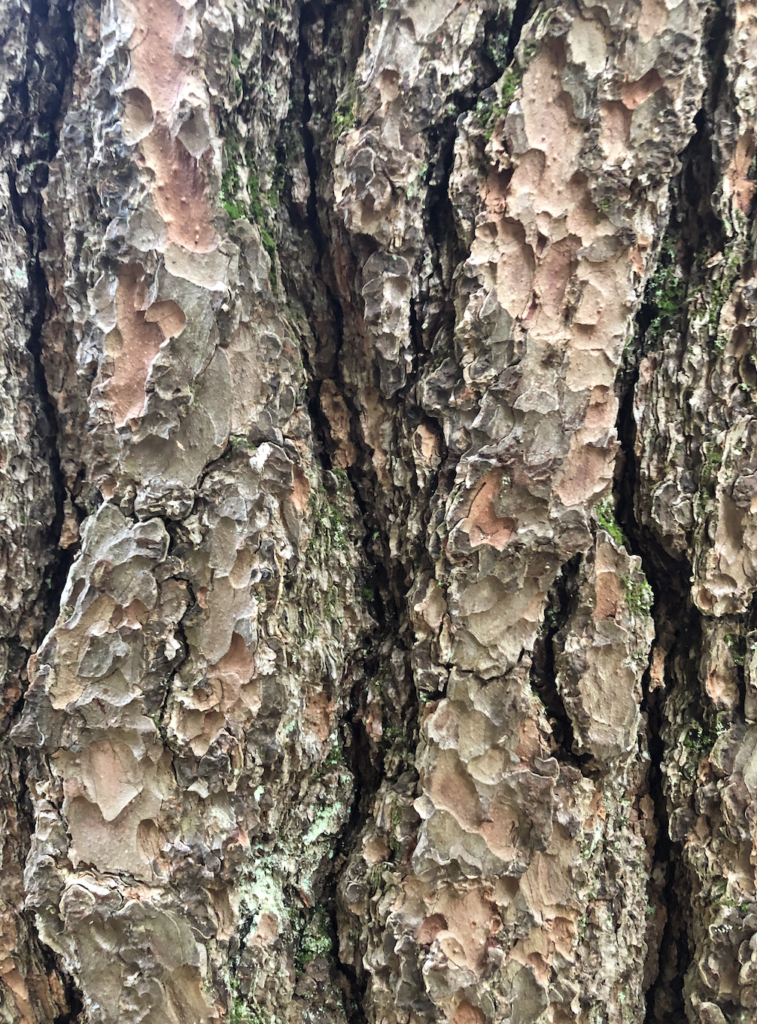While in my visit to Centennial Woods, I failed to find living organisms that would ordinarily come to mind such as squirrels, rabbits, or even large/small bugs. So instead, I decided to focus this blog post on the living organisms that are often looked past. These organisms have always been beautiful and interesting to me, and I find their silence, hardiness, and life captivating in all their perplexity of survival.
Moss. Trees. Grasses. Ferns. Even those organisms which might be considered weeds if they were to pop up in a suburban lawn.

These species characterize my sight because they are the unseen, the opposite of the bigger picture. These small pieces of greenery mixed within the large speak to the peacefulness and calmness of my chosen space: the bend in the stream.
Even as the weather is changing, it seems that these species, these organisms are going to stay green and kicking until the snow starts falling. This is fascinating to me, and highlights the how life continues to thrive within centennial.
The change in these organisms has not been much. While I am sure that they have had some, it is hardly noticeable to me, as my appreciation for these small but vital parts of the wooded ecosystem is new.
I have noticed, however, that the soil is becoming harder overall, but the fallen leaves are becoming softer as the degrade into a soil and contribute to the fertility of the soil and decompose into a rich organic material.
Mapping:
While creating the map of my natural area, I focused on how the landscape transitioned from the wooded path that leads to the winding stream in Centennial. There is a bridge that crosses the stream, and I included this in my map as well. This is because, while it is manmade, it speaks to the use of the land. Not only is Centennial home to living organisms like mosses, ferns, and trees, but it is also a place to take walks, runs, and find species to learn more about.
My sense of place was effecting by the mapping of my chosen phenology area because I was drawn to the fact that the presence of people in Centennial certainly has an effect on the species in that area.
Before the mapping activity and the focus on the species which was the purpose of this blog post, I never thought of the two worlds interacting in such a way. Footpaths effect plant growth, bridges do the same. Where humans don’t trek is where the vegetation becomes thicker and where they’re might be more evidence of larger living organism that initially began searching for like squirrels, rabbits, and deer.
My Map:

Transferred and made online, this map highlights the simplicity of my place on a bigger scale, showing how the dense trees somewhat hide the stream.

